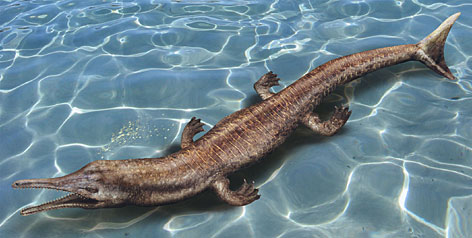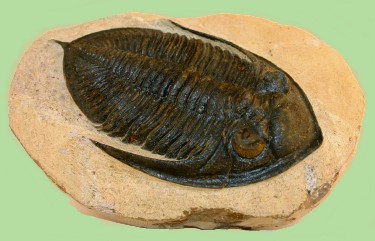The Pagan Colossus has been on the Earth for centuries protecting the 'Hero Prop', which is going to be something to do with nature spirits. He has survived of all the elements and time periods, but has had to find a way to disappear, move, then disappear again, which can prove difficult for something of colossal size.
I've started my research by looking into the species that have evolved the least, or have less noticeable changes to their physic to see what type of form my Pagan Colossus could take. I also have to look for a creature that could easily move between the different landscapes of the world and quickly hide.
Hag Fish:
 |
| Figure 1 |
 |
| Figure 2 |
Lampreys:
 |
| Figure 3 |
 |
| Figure 4 |
Crocodile:
This top image is a visualisation of what a crocodile in the pre-historic era could have looked like, based on bones found.
 |
| Figure 5 |
The differences between pre-historic crocodiles and crocodiles that are around today, is very minimal, just basic anatomy changes to help the creature survive.
 |
| Figure 6 |
Shark:
The shark is the same as the crocodile; there are numerous representations of how pre-historic sharks looked based on the bones discovered.
Figure 7 is an image of shark called the 'Frilled Shark', which can be found in places such as SouthEast Australia, New Zealand, SouthEast Asia, West Africa, Chilie and the Caribbean. A more accurate nickname is 'the living fossil', since this shark belongs to a primitive species that has changed very little over the millions of years.
 |
| Figure 7 |
 |
| Figure 8 |
 |
| Figure 9 |
Another area of consideration was going back to see the earliest mammals, amphibians and fish to see how different their evolution patterns are to the creatures that exist with us.
Cotylosaurs:
Trilobites:
 |
| Figure 10 |
 |
| Figure 11 |
Trilobites:
 |
| Figure 12 |
 |
| Figure 13 |
Cephalopod:
 |
| Figure 14 |
 |
| Figure 15 |
Ichthyostega tetrapod
 |
| Figure 16 |
Turtle
'Amniotes are the group of animals that produce an amniotic egg i.e. the reptiles, birds, and mammals. The other major amniote group, the Diapsida, includes the birds and all living and extinct reptiles other than the turtles and tortoises. Turtles and tortoises belong in a third group of amniotes, the Anapsida. Members of these groups are classified on the basis of the number of openings in the temporal region of the skull.'
 |
| Figure 17 |
 |
| Figure 18 |
 |
| Figure 19 |
 |
| Figure 20 |
Fossils:
 |
| Figure 21 |
 |
| Figure 22 |
 |
| Figure 23 Oldest Tiger Fossil Found |
 |
| Figure 24 |
 |
| Figure 25 |
Bibliography
Images
Figure 1 - https://blogger.googleusercontent.com/img/b/R29vZ2xl/AVvXsEjzmfQfAF-TTRen17BwSkXow9G5xIXmeq2ZNcCNtPyzgDJ16tKlyAKHOkZnFACkxTrrZc8QOagO4HLNvAY_3veXGfHS8GjoB4bo-eIMRLuEErM63fTEik9d0shK_IqinV42MLDzXMvRAT0u/s1600/Hagfish.jpg
Figure 2 - http://www.whaletimes.org/CopyrightT%20Frank%20hag%20face%20crop.jpg
Figure 3 - http://www.dfo-mpo.gc.ca/science/Publications/article/img/sea_lamprey.gif
Figure 4 - http://pandasthumb.org/images/Lamprey.jpg
Figure 5 - http://www.cryptomundo.com/wp-content/uploads/croc472.jpg
Figure 6 - http://hot100tips.com/wp-content/uploads/2010/11/crocodile.png
Figure 7 - http://news.nationalgeographic.com/news/2007/01/images/070124-sharks-weird.jpg
Figure 8 - https://blogger.googleusercontent.com/img/b/R29vZ2xl/AVvXsEiRjpgtCAM9T74sxsLLuVzQxg6p_rKqxl5NTLmIh_9bSR9WpXW_h7vBL0QP1_Sl0v9wJLyzvxa3ONzMh3AL2Wp8DIxZA3_TSNpL8EQgGAyiqDqyenI4GoMV_nqgdH-Lj8uqTlT8uroNROYC/s640/goblin_shark_attack_art.jpg
Figure 9 - http://static.ddmcdn.com/gif/great-white-shark-1.jpg
Figure 10 - http://e-ducation.net/scientists/ichthyostega2.jpg
Figure 11 - http://cbcreatures.webs.com/Hylonomus_BW.jpg
Figure 12 - http://evolution.berkeley.edu/evolibrary/images/trilobite_spiny.jpg
Figure 13 - http://www.trilobites.info/triloimposterserolisTP.jpg
Figure 14 - http://photos1.blogger.com/blogger/5980/535/1600/cephalopod%20fossil.0.jpg
Figure 15 - https://blogger.googleusercontent.com/img/b/R29vZ2xl/AVvXsEgAsIsZtaCDy1hkMIsQSy0FH4rtWP7_egILs6jcq7nBL_5fPQLl5USkox1wkHxdlqY4Kd92XgUVcec2-CO2fe8uScGv4NCkoMCdgJDreX33GpBGbxAwF5VILn6UogCMpYbXDdnQMC5y9pc/s1600/morphology-evolution_03.jpg
Figure 16 - http://futurity.org/wp-content/uploads/2009/05/ichthyostega.gif
Figure 17 - http://www.thedinosaurboy.com/uploaded_images/Proganochelys2-796395.jpg
Figure 18 - http://scribalterror.blogs.com/scribal_terror/images/2007/05/17/turtle_zoom.jpg
Figure 19 - http://a3.ec-images.myspacecdn.com/images02/38/fc2341873166406bae8852f45c35b770/l.jpg
Figure 20 - http://www.all-about-reptiles.com/images/large-sea-turtle.jpg
Figure 21 - http://www.fossilsdirect.co.uk/images/home2.jpg
Figure 22 - http://www.minimegeology.com/shop/wpimages/Trilobite_color.jpg
Figure 23 - http://amazingnotes.com/wp-content/uploads/2011/12/tiger-fossil.jpg
Figure 24 - http://www.maropeng.co.za/images/uploads/fossil_lg.jpg
Figure 25 - http://www.oum.ox.ac.uk/thezone/fossils/history/images/jurass01.jpg
Information:
Frilled Shark iinformation taken from: http://dsc.discovery.com/sharks/frill-shark.html
Turtle information taken from: http://sci.waikato.ac.nz/evolution/AnimalEvolution.shtml#earliestvertebrates

No comments:
Post a Comment